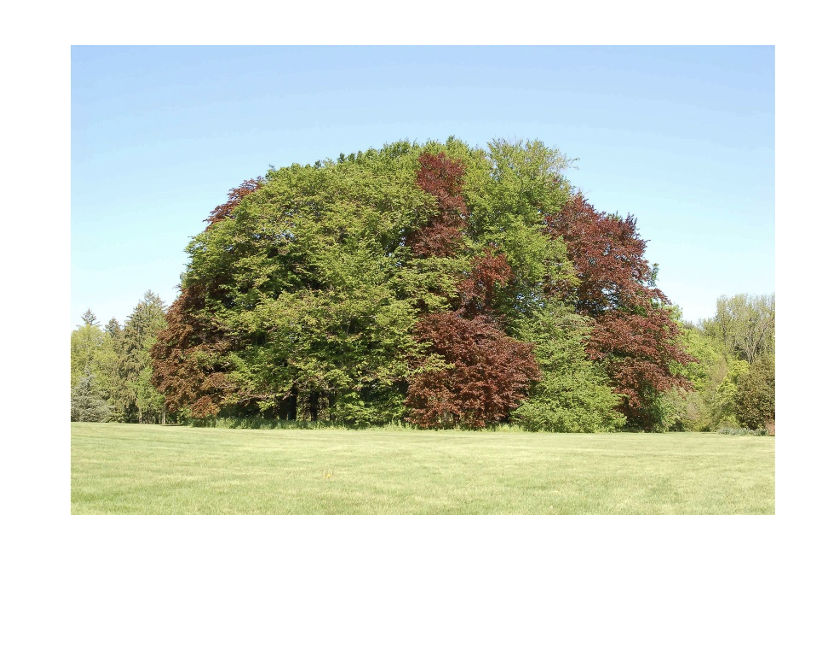Located on the Planting Fields East Lawn, a copse, or thicket, of beech trees once provided a beautiful vista from Coe Hall’s front entrance. Although beech trees are not quick to grow, they fill out over time and provide shade in the spring and summer and beautiful bronze and copper colors in the fall. Through careful placement of border plantings and trees, the Beech Copse at Planting Fields was designed to impressive effect. Many decades ago, it stood out as an individual, isolated planting, distinct from other gardens edging the East Lawn. Today, the nearby Synoptic Garden—the first new garden created after Planting Fields was acquired in 1955 by New York State for educational purposes—has encroached upon the original design and the copse blends more closely with the adjacent trees and planting beds. The Beech Copse no longer appears to be dramatically rising from an open lawn. Thankfully, changes are underway to restore the Beech Copse to its prior glory.
The idea for the beech copse arose when the Coe family traveled to England in April 1921. W.R. Coe was born in England in 1869, and immigrated to the United States with his family in 1883. While on their visit back to his homeland, W.R. Coe visited the Waterer & Sons nursery several times. He remarked how impressive the trees and shrubs looked in the English countryside. In particular, Coe noted the “very effective groups of English beeches with an occasional copper beech planted say about 25 trees in a group about 15-20 feet apart.” This comment may have inspired for the beech copse Coe was to have planted on the East Lawn of the family’s Long Island estate. There is no other mention of any plan to create a beech copse at Planting Fields, nor does it appear on any drawings prepared by the Olmsted Brothers.
Following the family’s return to New York, a beech copse was created at Planting Fields. Its effect was one of a bouquet of trees, growing in a tightly spaced, thriving group on the open East Lawn. The Beech Copse developed into a massive canopy over 150 feet in diameter. Unfortunately, after 90 years the copse had fallen into disarray, no longer the tightly designed landscape feature it was intended to be. Twelve diseased and declining beech trees needed removal. Plans are underway to restore the Beech Copse, removing and replanting the copse in entirety, shifting the location slightly forward to allow for more space around it and placing new edge plantings to more clearly delineate the East Lawn from the Synoptic Garden. Nineteen new beech trees will be planted in April to recreate the idyllic vista that was originally seen on the East Lawn at Planting Fields.
by Kristy Pavlick
Photo credit: Vincent Simeone

